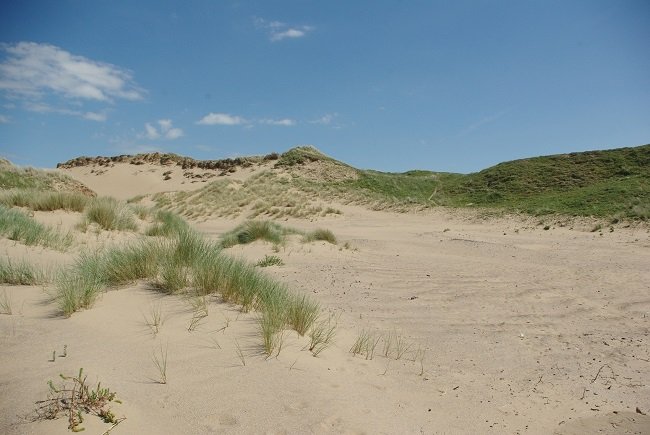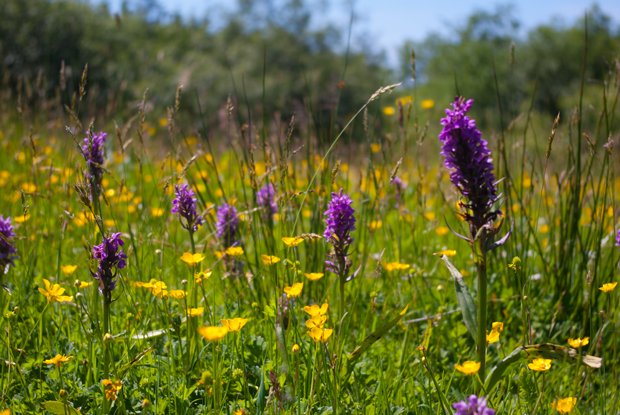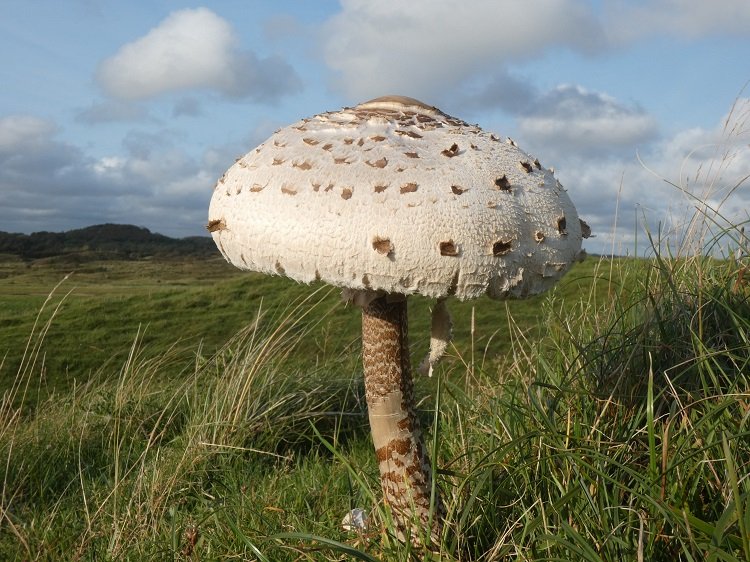Nature is all around us and can be appreciated in all its guises. However, there are some areas within the county that are home to particularly significant habitats and species richness and thus of particular importance to wildlife. The following are just a number of the sites which are open to the public and provide a place to enjoy nature within Bridgend county borough:
Ogmore Washeries is home to several rare colliery spoil invertebrate species, such as the ghost slug and various rare millipede species’. The brown-banded carder bee (Bombus humilis) has also been recorded at the site. The site also provides an important habitat for bullfinches (Pyrrhula pyrrhula) and horseshoe bats (Rhinolophus). The site also serves as testament of the value of the LNP, having secured funding through Local Places for Nature in 2020.
Kenfig Burrows National Nature Reserve comprises a massive dune system and Kenfig Pool, which is the largest natural body of freshwater in South Wales. It is one of the few sites in Europe where one can see the endangered fen orchid (Liparis loeselii). It is also one of the only places in the UK that the bittern (Botaurus stellaris) can be seen during the winter. Golden Plovers, Tufted Ducks and Pochards can all be spotted from the bird hides overlooking the pool.
Merthyr Mawr Warren National Nature Reserve is home to the highest dune in all of Wales, and the second highest in Europe, known as the Big Dipper. The combination of ancient limestone cliffs and sand coverage to create a unique geological substrate that supports a wealth of unusual plants, insects and fungi. Rare orchids such as marsh helleborine (Epipactis palustris), interesting Morels and Helvellas fungi and threatened invertebrates such as the cuckoo bee (Coelioxys mandibularis) can all be found at this site.
Parc Slip Nature Reserve is comprised of a mosaic of diverse habitat including grassland, woodland, wetlands and freshwater lakes. Tawny owls (Strix aluco), wood mouse (Apodemus sylvaticus), green woodpecker (Picus viridis), lapwing (Vanellinae) and water rail (Rallus aquaticus) have all been spotted at this site. Parc Slip also has good amphibian assemblages including great crested newt (Triturus cristatus). In the summer, oxeye daisy (Leucanthemum vulgare), red bartsia (Odontites vernus) and a variety of wild orchids can be spotted in the fields around the visitor centre.
Bryngarw Country Park is a 100-acre estate adjacent to the resplendent Bryngarw House. Consisting of mature broadleaf woodland, grassland, wildflower meadows and ponds, this park punches well above its weight in terms of species diversity. Woodpeckers and foxes can be spotted in the woodland, whilst the pond plays host to palmate newts (Lissotriton helveticus) and common toad (Bufo bufo). Being a Country Park, Bryngarw provides a great opportunity for families to engage with nature and provides links to the Garw Valley along the community route.
Locks Common Local Nature Reserve (LNR) is one of six LNRS within the county borough. The common is also a Regionally Important Geological Site as it contains two hectares of limestone pavement. This unusual geological substrate supports a specific and varied plant species assemblage including species such as squinancywort (Asperula cynanchica), wild thyme (Thymus polytrichus) and eyebright (Euphrasia sp.). The common also includes neutral grasslands, scrub and sub maritime heath features.The sub maritime heath is a rare habitat and generally only found on the western seaboard of the Atlantic Ocean. Given its coastal location, on a clear day there are splendid views of Swansea and Devon.






